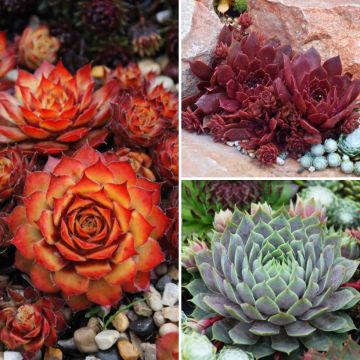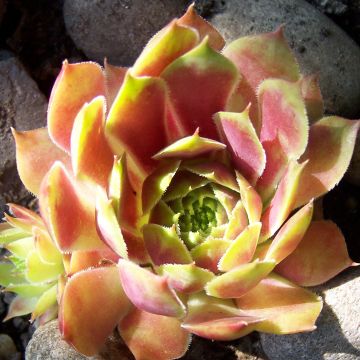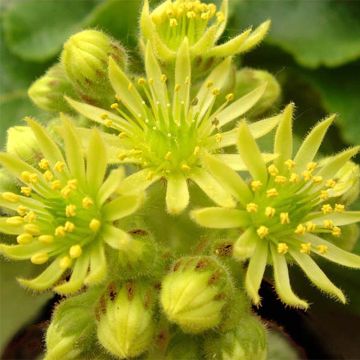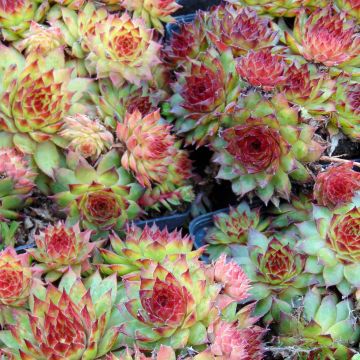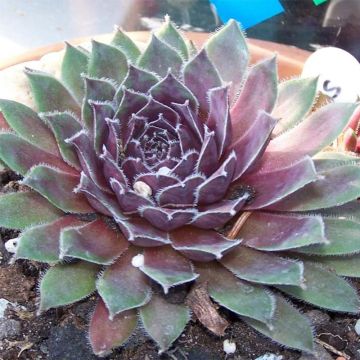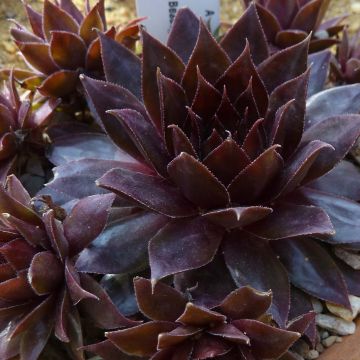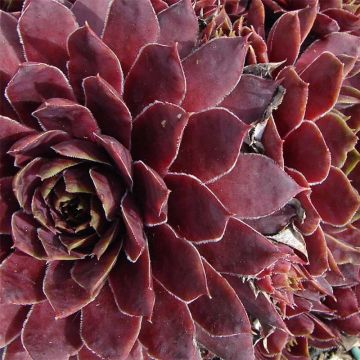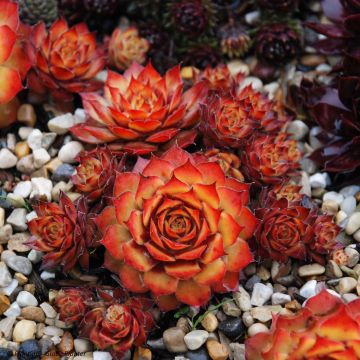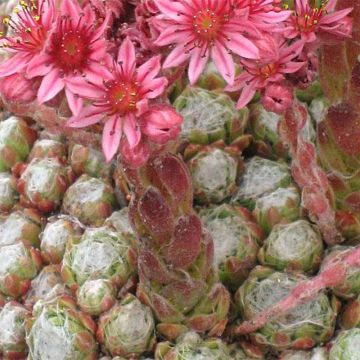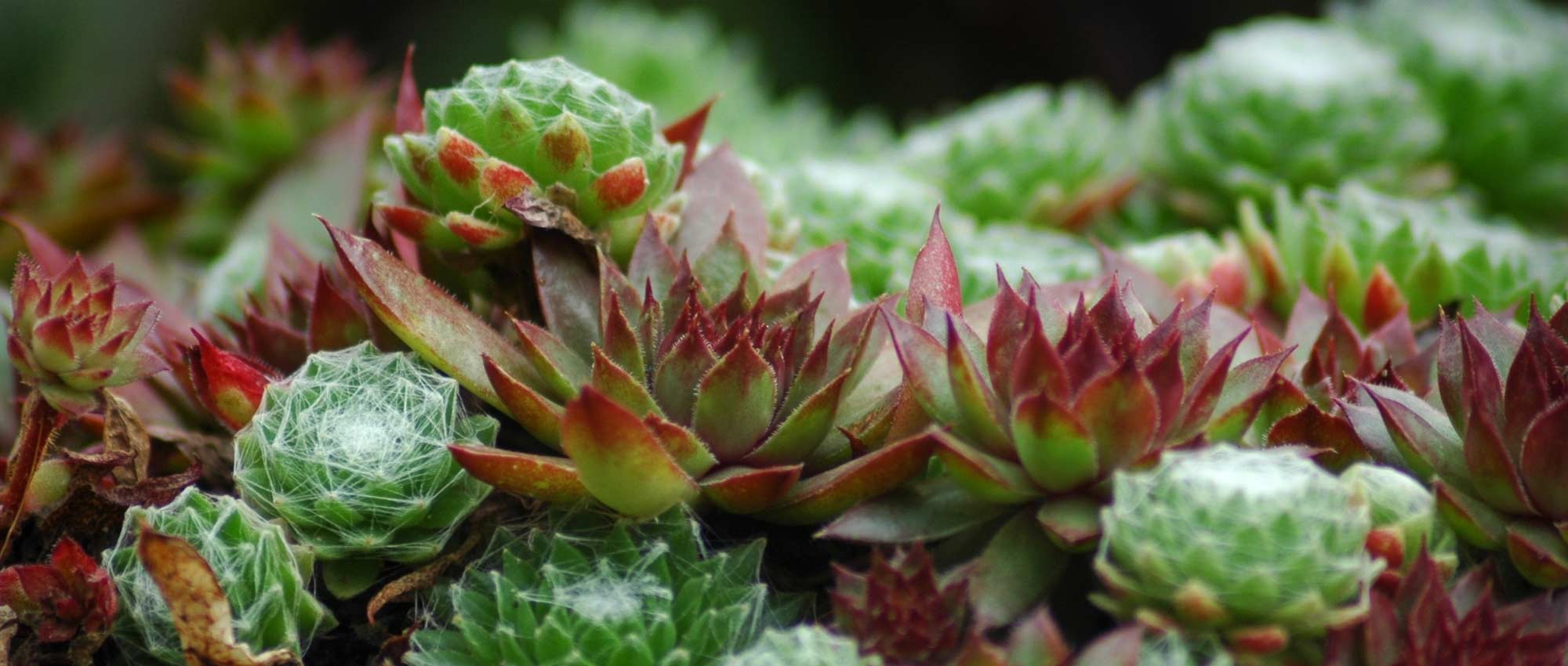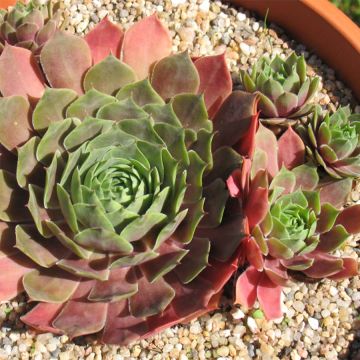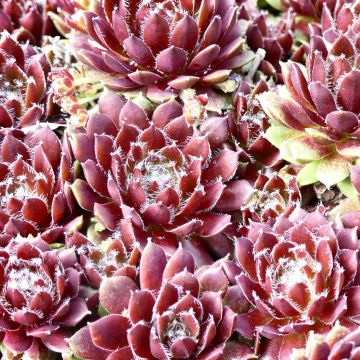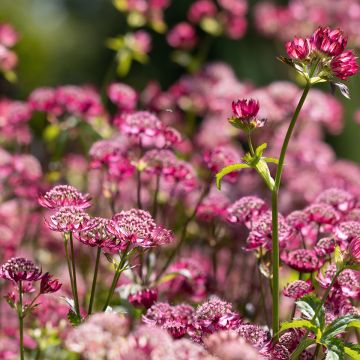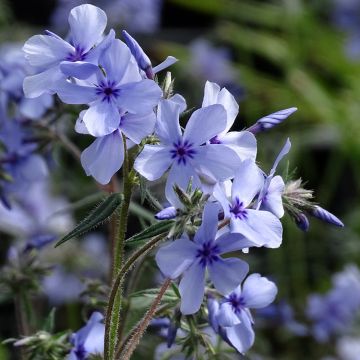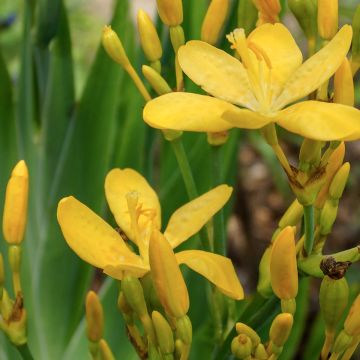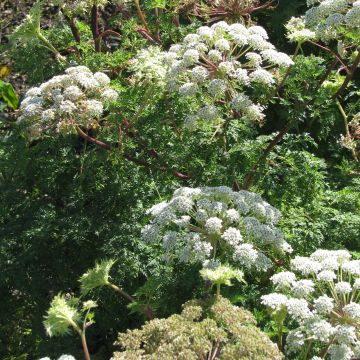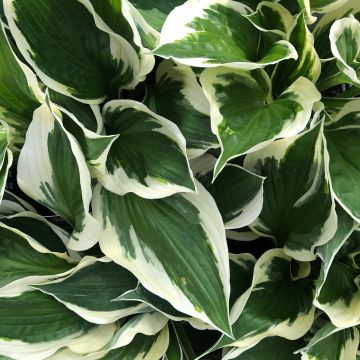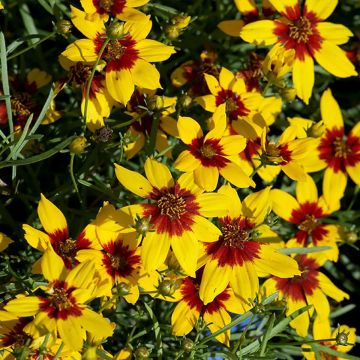

Sempervivum Rauher Kulm - Joubarbe hybride
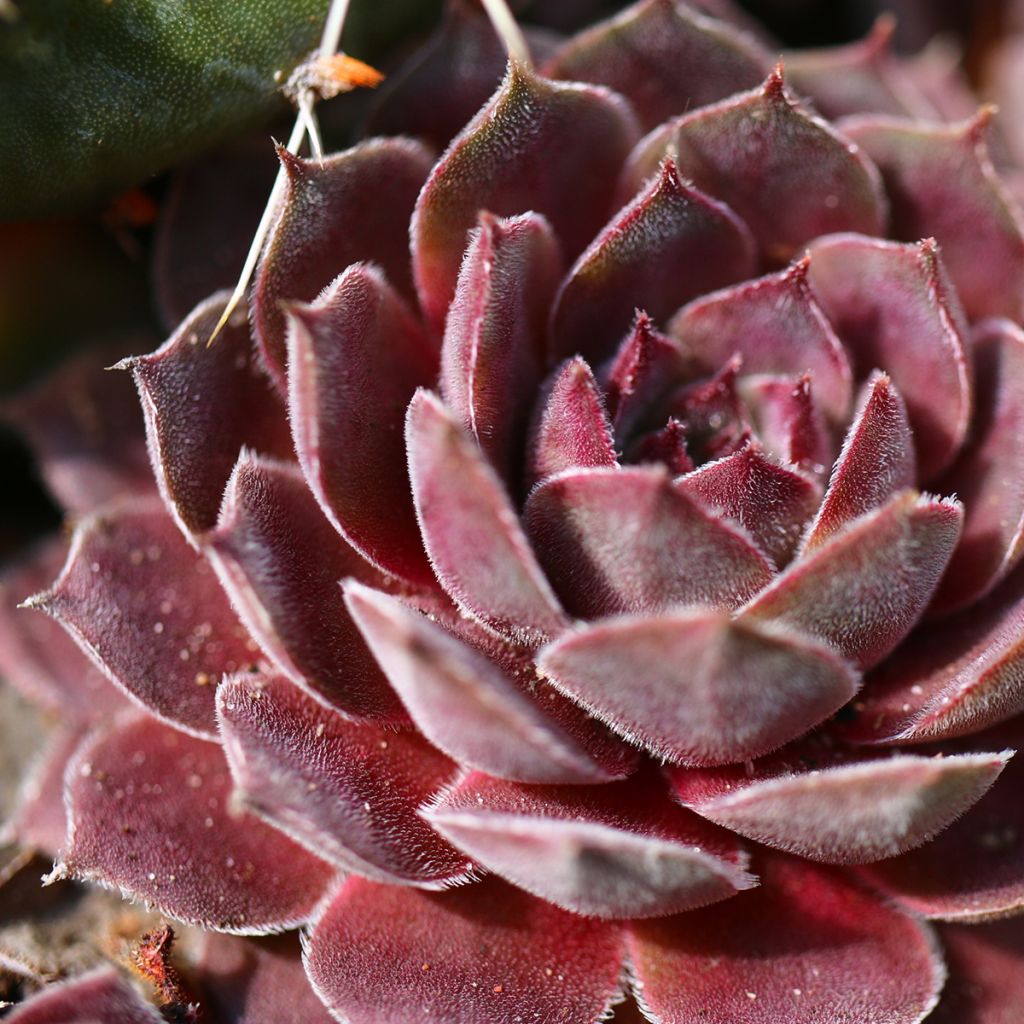

Sempervivum Rauher Kulm - Joubarbe hybride
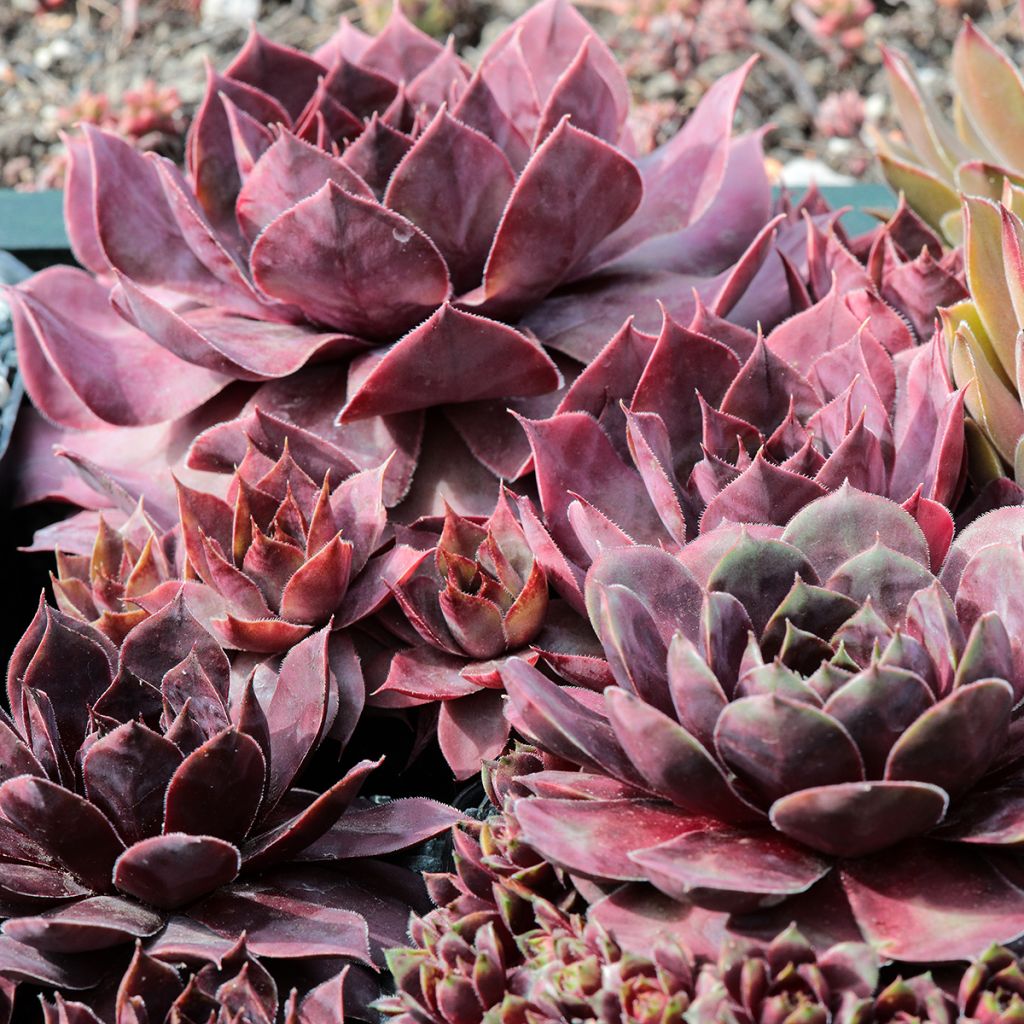

Sempervivum Rauher Kulm - Joubarbe hybride
Sempervivum Rauher Kulm
Sempervivum Rauher Kulm
Houseleek, Hen and Chicks
Special offer!
Receive a €20 voucher for any order over €90 (excluding delivery costs, credit notes, and plastic-free options)!
1- Add your favorite plants to your cart.
2- Once you have reached €90, confirm your order (you can even choose the delivery date!).
3- As soon as your order is shipped, you will receive an email containing your voucher code, valid for 3 months (90 days).
Your voucher is unique and can only be used once, for any order with a minimum value of €20, excluding delivery costs.
Can be combined with other current offers, non-divisible and non-refundable.
Why not try an alternative variety in stock?
View all →This plant carries a 12 months recovery warranty
More information
We guarantee the quality of our plants for a full growing cycle, and will replace at our expense any plant that fails to recover under normal climatic and planting conditions.
Would this plant suit my garden?
Set up your Plantfit profile →
Description
Sempervivum 'Rauher Kulm' is a rarely offered hybrid houseleek that stands out with its beautifully coloured rosettes of purplish violet in winter. The tips of the leaves turn bluish-green from spring onwards. The succulent leaves lighten from the edges, and their undersides turn pale yellow-green in summer. Mature plants are adorned with beautiful pink flower stems with a darker centre. Easy to grow, this lovely perennial enhances rock gardens, walls, green roofs, and all rocky areas inhospitable to other plants. Once established, houseleeks like to be forgotten. These plants that seem to live off the air can also be grown in large pots.
Sempervivum 'Rauher Kulm' is a German creation by Dr Fritz Kühlein dating back to 1962. This hybrid variety is named after an old volcano near Bayreuth. Houseleeks naturally grow in lawns, on rocks and scree slopes, in open and sunny locations, mainly in mountainous areas. They belong to the Crassulaceae family.
The houseleek 'Rauher Kulm' is a succulent perennial with thick and long roots that penetrate deeply into rock crevices, providing good anchorage on the walls while drawing water from deep below. The plant slowly forms small colonies of differently sized rosettes, juxtaposed, reaching 5 to 7cm (2 to 3in) in diameter at maturity, and not exceeding 10cm (4in) in height. Over time, this houseleek can form a slightly loose or dense carpet through its stoloniferous stems, spreading up to 30cm (12in) on the ground, perfectly following the terrain. Resembling a spread-out artichoke, each rosette is composed of numerous ovate, concave, and pointed leaves with cilia, without petioles, overlapping each other. Their colour varies depending on their age, season, and climatic conditions. A soft purple, close to red wine, dominates in winter. Flowering appears on rosettes aged 2 or 3 years, which will then disappear, having ensured their perpetuity by producing a few small daughter rosettes on the periphery. The fluffy flower stems, 15 to 20cm (6 to 8in) tall, develop from June to August, formed by thick stems that bear 1 to 8 star-shaped flowers with 8 to 12 pink petals crossed by a dark pink median line. The centre of the flowers is a deep pink.
Sempervivum 'Rauher Kulm', like all houseleeks, is an excellent plant for dry or alpine rockeries. It thrives where few species survive. You can still enjoy this hardy perennial if your soil is poor, rather dry, rocky, stony, or even slightly calcareous. It withstands temperatures below -15°C (5°F)) and requires no maintenance. It promises to enliven any mineral decor. Houseleeks are unusual and easy-to-care-for succulent plants that you quickly become attached to. Their flowers and foliage with varied shades inspire the desire to collect them, multiply them, and create astonishing compositions in the most inhospitable places. They look stunning in low pots, especially in terrine-style containers. They are irreplaceable in borders, troughs, or rockeries, alongside wall bellflowers, paronychia, sedum, or Lewisia cotyledon. Consider choosing companion plants with staggered flowering (Antennaria dioica, thyme, delosperma, ficoides, Euphorbia myrsinites) to create a colourful and joyful rockery.
Sempervivum Rauher Kulm in pictures
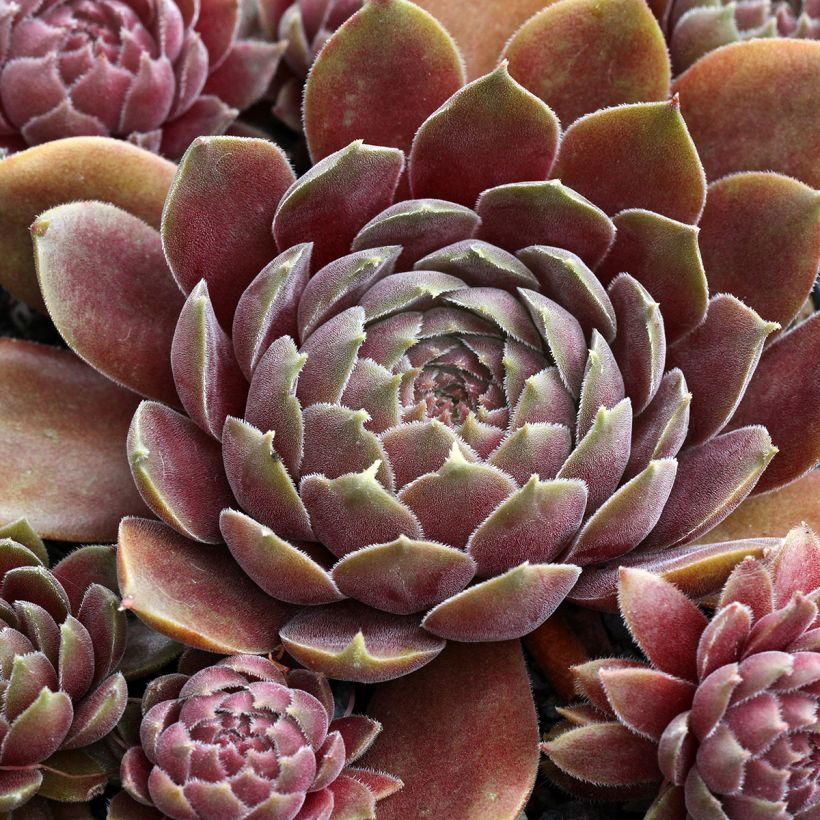

Flowering
Foliage
Plant habit
Botanical data
Sempervivum
Rauher Kulm
Crassulaceae
Houseleek, Hen and Chicks
Cultivar or hybrid
Other Sempervivum - Houseleek
View all →Planting and care
Sempervivum 'Rauher Kulm' enjoys sunny or partially shady exposures. It prefers perfectly drained, moist to dry, poor, sandy or gravelly soils that are slightly calcareous or not. You can plant it in the ground or in a pot in spring or autumn, adding gravel or coarse sand to the planting substrate. Conversely, if you place it in a rockery or on a wall, just give it a little potting soil to help it to establish. Afterwards, it will manage on its own.
If you wish to multiply it, simply cut a few young rosettes and replant them elsewhere, burying the roots just slightly. Take care of it by ensuring it is not overwhelmed by taller plants, that it does not get covered in dead leaves or vegetation residues, and by possibly removing small faded inflorescences.
Planting period
Intended location
Care
Planting & care advice
This item has not been reviewed yet - be the first to leave a review about it.
Similar products
Haven't found what you were looking for?
Hardiness is the lowest winter temperature a plant can endure without suffering serious damage or even dying. However, hardiness is affected by location (a sheltered area, such as a patio), protection (winter cover) and soil type (hardiness is improved by well-drained soil).

Photo Sharing Terms & Conditions
In order to encourage gardeners to interact and share their experiences, Promesse de fleurs offers various media enabling content to be uploaded onto its Site - in particular via the ‘Photo sharing’ module.
The User agrees to refrain from:
- Posting any content that is illegal, prejudicial, insulting, racist, inciteful to hatred, revisionist, contrary to public decency, that infringes on privacy or on the privacy rights of third parties, in particular the publicity rights of persons and goods, intellectual property rights, or the right to privacy.
- Submitting content on behalf of a third party;
- Impersonate the identity of a third party and/or publish any personal information about a third party;
In general, the User undertakes to refrain from any unethical behaviour.
All Content (in particular text, comments, files, images, photos, videos, creative works, etc.), which may be subject to property or intellectual property rights, image or other private rights, shall remain the property of the User, subject to the limited rights granted by the terms of the licence granted by Promesse de fleurs as stated below. Users are at liberty to publish or not to publish such Content on the Site, notably via the ‘Photo Sharing’ facility, and accept that this Content shall be made public and freely accessible, notably on the Internet.
Users further acknowledge, undertake to have ,and guarantee that they hold all necessary rights and permissions to publish such material on the Site, in particular with regard to the legislation in force pertaining to any privacy, property, intellectual property, image, or contractual rights, or rights of any other nature. By publishing such Content on the Site, Users acknowledge accepting full liability as publishers of the Content within the meaning of the law, and grant Promesse de fleurs, free of charge, an inclusive, worldwide licence for the said Content for the entire duration of its publication, including all reproduction, representation, up/downloading, displaying, performing, transmission, and storage rights.
Users also grant permission for their name to be linked to the Content and accept that this link may not always be made available.
By engaging in posting material, Users consent to their Content becoming automatically accessible on the Internet, in particular on other sites and/or blogs and/or web pages of the Promesse de fleurs site, including in particular social pages and the Promesse de fleurs catalogue.
Users may secure the removal of entrusted content free of charge by issuing a simple request via our contact form.
The flowering period indicated on our website applies to countries and regions located in USDA zone 8 (France, the United Kingdom, Ireland, the Netherlands, etc.)
It will vary according to where you live:
- In zones 9 to 10 (Italy, Spain, Greece, etc.), flowering will occur about 2 to 4 weeks earlier.
- In zones 6 to 7 (Germany, Poland, Slovenia, and lower mountainous regions), flowering will be delayed by 2 to 3 weeks.
- In zone 5 (Central Europe, Scandinavia), blooming will be delayed by 3 to 5 weeks.
In temperate climates, pruning of spring-flowering shrubs (forsythia, spireas, etc.) should be done just after flowering.
Pruning of summer-flowering shrubs (Indian Lilac, Perovskia, etc.) can be done in winter or spring.
In cold regions as well as with frost-sensitive plants, avoid pruning too early when severe frosts may still occur.
The planting period indicated on our website applies to countries and regions located in USDA zone 8 (France, United Kingdom, Ireland, Netherlands).
It will vary according to where you live:
- In Mediterranean zones (Marseille, Madrid, Milan, etc.), autumn and winter are the best planting periods.
- In continental zones (Strasbourg, Munich, Vienna, etc.), delay planting by 2 to 3 weeks in spring and bring it forward by 2 to 4 weeks in autumn.
- In mountainous regions (the Alps, Pyrenees, Carpathians, etc.), it is best to plant in late spring (May-June) or late summer (August-September).
The harvesting period indicated on our website applies to countries and regions in USDA zone 8 (France, England, Ireland, the Netherlands).
In colder areas (Scandinavia, Poland, Austria...) fruit and vegetable harvests are likely to be delayed by 3-4 weeks.
In warmer areas (Italy, Spain, Greece, etc.), harvesting will probably take place earlier, depending on weather conditions.
The sowing periods indicated on our website apply to countries and regions within USDA Zone 8 (France, UK, Ireland, Netherlands).
In colder areas (Scandinavia, Poland, Austria...), delay any outdoor sowing by 3-4 weeks, or sow under glass.
In warmer climes (Italy, Spain, Greece, etc.), bring outdoor sowing forward by a few weeks.






























